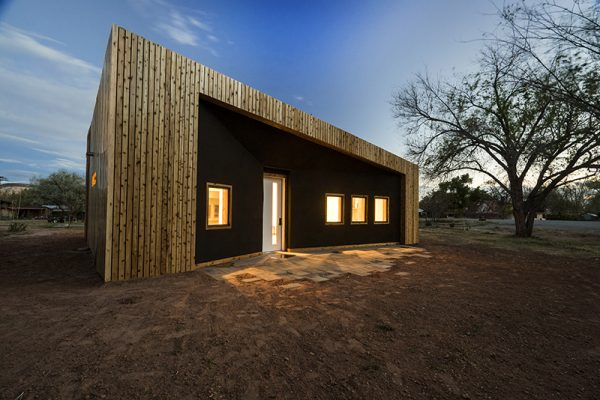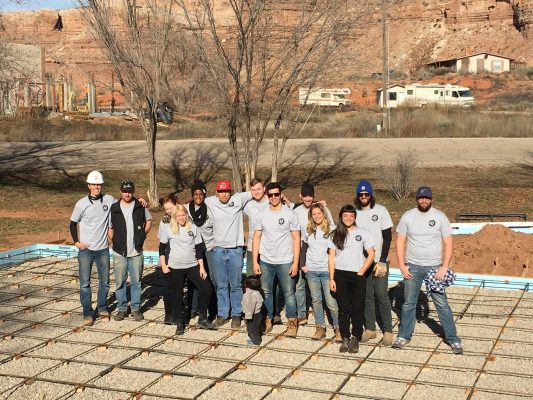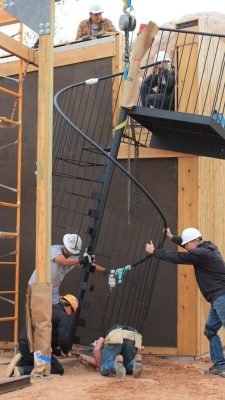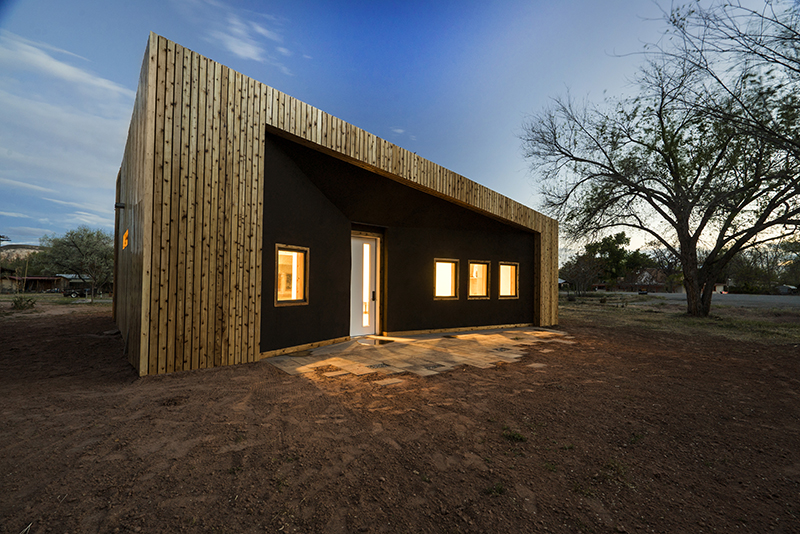
Few professions in the construction industry practice as many different skills as architects. In addition to exercising creativity they must also understand engineering, building codes, properties of different building materials, and perhaps most importantly, listen closely to their clients to parse out exactly what is being asked for.
For the past 12 years, the Design Build Bluff program in the college of Architecture and Planning at the University of Utah has been immersing graduate students in an environment intended to develop the multiple skills they will need as professionals and contribute to a community in need.
Working from the town of Bluff, on the Navajo reservation in Southeastern Utah, the students have designed and built 16 homes, mostly from donated and recycled materials, for families in the region.
“We want to develop two sets of skills,” said DBB Director Professor Jose Galarza. “There are a set of ‘hard skills’ and that is the hands-on construction and giving the students the chance to lift their ideas off the paper and put them into practice. The other is developing a sensitivity for the real world. We want to be facilitators and help build capacity and resiliency in this community. I want students to be very cautious about thinking they know better than the community they are serving. We have methods we develop to talk with clients and engage with them to make sure we are both getting the most out of the process,” said Galarza.
Over the course of the program, students take the information from client interviews and begin to develop a design. In mid-January they return to the reservation for months of hands-on construction work and more community engagement.
“In the past I had done some construction and carpentry. I had educational experience but the DBB program really tied it all together for me,” said former student and program graduate Nancy Kole, who is now working for a design-build firm in Boulder, Colo. “I learned new skills and the program challenged me to use them. I got to draw sections and then build those walls with my own hands.”

Galarza said that in recent years he’s tried to emphasize the facilitator role architects can play in responding to the needs in a community.
“The Navajo community has already suffered from years of colonization and outsiders coming in saying they knew what was best,” said Galarza. “Sometimes architects disassociate themselves from the community or are ‘helicoptered’ in to solve a problem.”
DBB’s most recently completed project, Cedar Hall, was built with the intention of integrating the “campus” where students live, work and store materials to the wider Bluff community.
Rather than serving as a single family home, Cedar Hall is a community gathering place and more formal workshop for the students.
“We wanted to create face for the campus. The building faces the street and has a place for people to gather. It connects us to the town and people in the community.” Galarza said.
All the DBB projects can be viewed on the program website at www.designbuildbluff.org.




